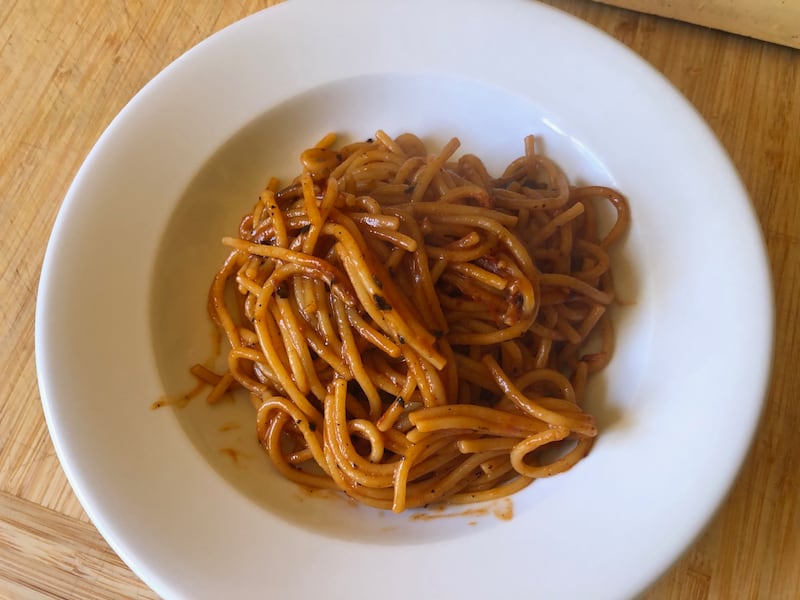It’s easy to kill pasta, whether by drowning it in sauce or just cooking it to death. But spaghetti all’assassina requires a little effort. The southern Italian dish uses a technique called risottata to cook the pasta like, well, risotto. It’s often used with smaller, shaped pasta like pastini, but here a tomato-flavored broth adds flavor to spaghetti and helps with the required charring that gives this dish another name: spaghetti bruciati or burnt spaghetti.
Most recipes tell you to use a heavy pan large enough to let the spaghetti lay flat, but even my arsenal of skillets falls short when it comes to holding a pound of 11-inch noodles. So we’ll add another pasta-killing step sure to infuriate traditionalists: Break the spaghetti in half.

Kill Your Pasta
1 pound spaghetti, broken in half
1 14-ounce can crushed tomatoes
3 cloves garlic, chopped
1/4 cup extra-virgin olive oil, divided
1 teaspoon kosher-style sea salt
Water
Red pepper to taste
Grated Parmigiano Reggiano to serve, optional
Make the tomato broth by mixing about half of the tomatoes and the salt with 4-5 cups of boiling water in a small saucepan. You don’t need to keep the heat on after it’s mixed, but keep the pan on the stove.
In a heavy, preferably cast-iron skillet, combine about half the olive oil, garlic and red pepper. Heat over medium-high until you begin to smell the garlic (don’t let it brown—it will taste bitter). Add the rest of the tomatoes, spread into an even layer, then put the spaghetti on top in an even layer.
Keep the heat at medium-high and let the spaghetti sit undisturbed for several minutes so it develops a burnt crust in places. Pour about a cup of the tomato broth over the spaghetti, but don’t stir. Let the water boil until it’s almost gone (listen for the sound to change from bubbling to sizzling). Add another cup or so, and use a fork to check whether the pasta has softened enough to gently flip over. The bottom will have sections that look burnt, and the pasta will be clumping together. Use a fork to break up the clumps, but don’t worry too much about them.
Continue adding tomato broth a cup at a time, stirring and turning the spaghetti with each addition. As the pasta softens it will become easier to stir. When the last of the tomato broth has been added and cooked off, taste the spaghetti. It may need a bit more cooking, and there will be some that’s more cooked than the rest. Add hot water a half cup at a time and continue cooking until the pasta reaches your preferred level of al dente. Add the rest of the olive oil and cook for another minute or so. Taste and add salt as needed, serve with grated Parmigiano if desired.

